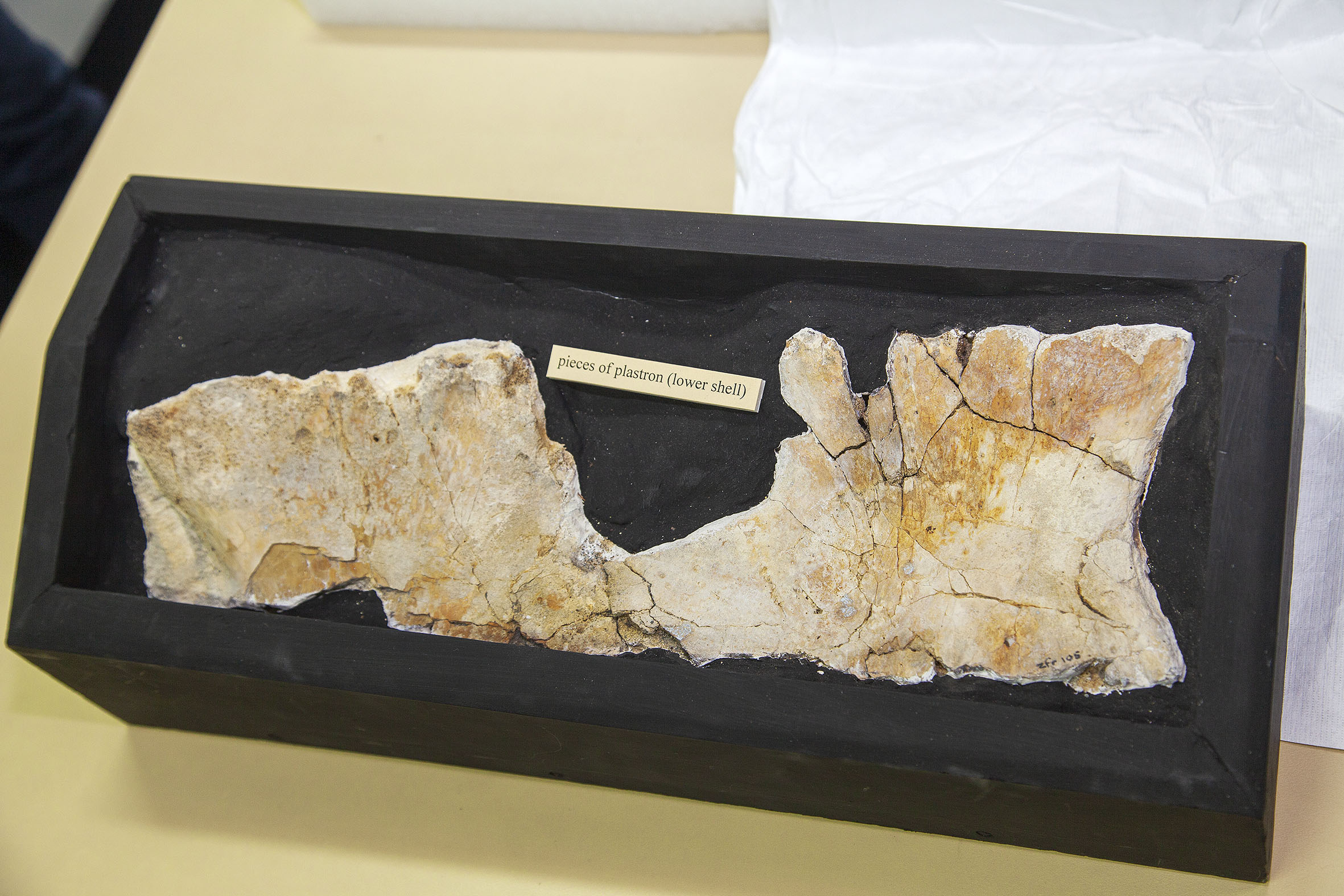
The sculptor was planning to make pedestals for his garden, but got more than he bargained for when he found what he thought was a piece of bone in a block from one of its columns.
It turned out to be what Canterbury Museum believes is a piece of shell from an eochelone turtle, which existed 30 million years ago.
Canterbury Museum senior curator of natural history Paul Scofield said It is thought the turtle would have been between 2m and 3m long in its day, as large as the biggest turtles in the world today.
The piece of turtle discovered is similar to another one on display at the museum found in a piece of limestone from an unknown Christchurch building in 1880.

Scofield said it is believed in the most recent case, the turtle piece was scooped up when the sea floor was being quarried for limestone, which is a sedimentary rock that commonly forms in clear, warm, shallow salt water.
“The story that I think is probably most interesting is the fact that it’s about potentially reuniting a probable collection [over] such a long time and path and just showing that the buildings of early Christchurch were, in fact, built on sort of the bones of a huge sea source of dead animals,” said Scofield.
The limestone was used in the construction of Oxford Terrace Baptist Church,which occurred between 1881 and 1882.

“This was very unusual. I’ve sculpted quite a lot of limestone before and never found a bone [or anything else].”
“It was, for me, very exciting. I love archaeology and fossils and stuff. Many other stone people that I’ve talked to also get very excited. It’s quite awesome.”
Scofield said other sea creatures alive at the same time as the turtle the shell is believed to have belonged to include “very bizarre” dolphins with teeth as sharp as sharks and giant penguins and shellfish.
The turtle piece will be on display once Canterbury Museum’s $195 million redevelopment is completed, he said.













